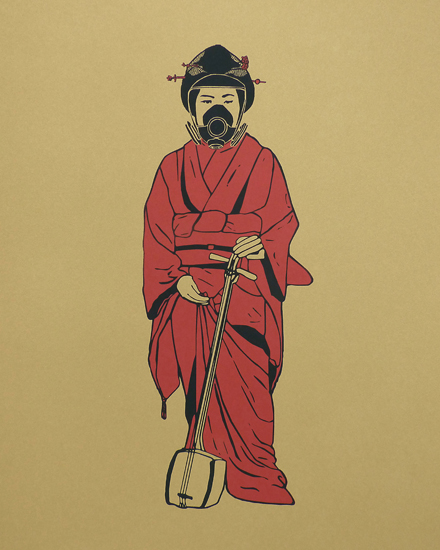From Andrew Frost…
The sense of quietude and serenity often found in classic Japanese woodcut illustrations is a magnetic force in the work of contemporary artists drawn to their aesthetic but wanting to bend that influence into a commentary on the modern world. From Japanese artists such as Takeshi Murakami or Americans like Jeff Wall, Hokusai‘s leagcy continues to produce an interesting trope in contemporary art – the creation of works that combine the iconographies of pop culture, cultural conflict and environmental disaster into highly self aware images.
Japanese-born, Sydney-resident artist Rujunko Pugh‘s Hereafter showcases her process of taking photographic images and turning them into arresting graphics. Pugh “…creates digital collages by superimposing hazardous material protective wear from photographs of the nuclear waste cleanup of Fukushima onto portraits from early Japanese photography [the] collages then converted into line illustrations to produce dystopian portraits”. By overlaying images from different time periods, Pugh flattens pictorial space into graphic works that are then disseminated as paste ups and other examples of street art, eliminating another space – the gap between the gallery and the public.
Until May 2
Dominik Mersch Gallery, Rushcutters Bay
Pic: From Rujunko Pugh’s Hereafter, 2015.

